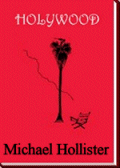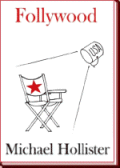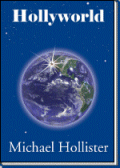Novelist & Critic
HOME PAGE
BIOGRAPHY
MODEL OF METAPHORS
DANEgerus
Patrick Garry, novelist
Apocalypse Now
The Best Years of Our Lives
The Big Chill
Billy Budd
The Bostonians
Casablanca
Citizen Kane
Close Encounters of the Third Kind
Coming Home
Daisy Miller
The Day of the Locust
Dr. Strangelove
Easy Rider
Fail-Safe
A Farewell to Arms
The Front
Gone with the Wind
Good Night, and Good Luck
The Graduate
The Grapes of Wrath
The Great Gatsby
Guilty by Suspicion
High Noon
Huckleberry Finn
Invasion of the Body Snatchers
Key Largo
The Majestic
Meet John Doe
Moby-Dick
The Old Man and the Sea
On the Waterfront
The Player
The Red Badge of Courage
Reds
The Scarlet Letter
The Shrike, based on Miss Lonelyhearts
2001: A Space Odyssey
The Sun Also Rises
Triumph of the Will
The Way We Were
Wise Blood
The Wizard of Oz
Woodstock
The World According to Garp
Peter Carafiol
Free Speech
Metaphor
archetype
Blacklist
Hollywood Novels
McCarthyism
Communist propaganda
Fail-Safe
Later that year, another movie was released with much the same plot as Strangelove, a melodrama rather than a comedy. Fail-Safe was a popular novel by two professors, adapted to the screen by Walter Bernstein, one of the old Reds who wrote Communist propaganda for the CBS television series You Are There while he was "blacklisted" temporarily back in the fifties. He made this picture with leftist friends in New York. Neither he nor Kubrick had cooperation from the U.S. Air Force nor from the Defense Department. Both had to include disclaimers from the government and both had to rely on very limited stock footage and speculation, especially in concocting war rooms and plots. Bernstein had footage of only one bomber. Eisley was too upset to take Paula along when he went downtown to see this one.
As he watched it, Fail-Safe looked to him like more film noir, pretending to be a documentary. Themes emerged rapidly, that there is no difference between democracy and totalitarianism, or between Americans and Communists. That the Soviets are equal in morality and nuclear capacity to the United States, that machines rule the world and will make the worst possible errors at the worst possible moments under the most dangerous and impossible circumstances. That there are no safeguards built into the system and that, therefore, Americans should immediately disarm to save themselves.
The plot depends upon a simultaneous double malfunction by computers on both sides with consequences beyond control. Subsequently, the entire force of Soviet fighter planes defending Moscow pursues a single decoy plane and the rest of their defense system cannot bring down one bomber. Kubrick allows that all the rogue attack bombers would probably be shot down or recalled, except perhaps for one. Bernstein denies that any bombers could be recalled at all and makes Soviet Air Defense so inept that Moscow is destroyed by one bomber, despite help from the U.S. Air Force feeding them all the information needed to shoot it down, as if Soviet pilots are Keystone Cops bumping into each other all over the sky. At the same time, however, the plot gains apparent credibility from the presence of Henry Fonda as the President of the United States.
The villain is an advisor to the President modeled on the real life Herman Kahn, a think tank strategist who had published a book on possible outcomes of thermonuclear war, analysis seen by many as inhumane and cold-blooded. As the advisor dressed in black, Walter Matthau talks like a deadly cold pedantic snob and is photographed with harsh lighting and from angles that make him look powerful, overbearing, dark and evil. Bernstein discredits him with the audience by having him slap a woman, advocate a first strike total preemptive nuclear war, admit that this would be "murder," say that Japan was right to sneak attack Pearl Harbor and that he had learned from the Nazis. Once nothing more can be done to save Moscow and the Soviets are threatening to destroy the entire United States, he advocates a total nuclear strike--to destroy and forever discourage our totalitarian enemy, to protect our democracy. By now his logic is similar to that used during World War II by Presidents Roosevelt and Truman to justify the saturation fire bombing of cities such as Berlin, Hamburg, Munich and Tokyo, then the atomic bombs dropped on Hiroshima and Nagasaki to save American lives.
Instead of acting like American presidents had in the past, President Muffy, or something like that, decides even before Moscow is hit, to nuke New York City! As compensation, you see, for our accidental destruction of Moscow. He does not argue to the Soviet Premier that we gave him all the help we could in destroying all our bombers and it is not our fault that Soviet Air Defense is so incompetent. The Premier says twice that he is convinced the attack is an accident, yet he intends to retaliate with total war. Muffy does not try to negotiate with him nor call for a conference nor promise reparations nor offer to give him Disneyland. He does not inform the public nor consult his Defense Department nor the United Nations, he just nukes New York--going down in history for making one huge mistake after another. The script does not allow him to consult with anyone but the Soviets because nobody would agree with him but enemies. His destruction of New York would be so devastating to the American economy and to confidence in his administration, it might provoke a revolution, the goal of the Communists all along. Muffy is given apparent sentiments by having his wife be in New York at the time. Nevertheless, his reflexive chess game logic seems just as cold-blooded as the Communist Party and a great deal more so than Herman Kahn, who was merely a scholar. Two wrongs make everything right and Muffy defends his country by murdering millions of his own people, like Stalin.
Eisley did not believe that any American president would ever make such a devil's bargain, not even a liberal. As soon as he got home, he looked up the story of Abraham and Isaac in a Holy Bible, because Muffy cited it as the moral basis for his decision, casting himself as Abraham, the people of New York as Isaac and the Soviet Premier as God. However, God only tests Abraham and does not require him to sacrifice his son. Eisley thought the Communists who made this picture must have laughed at Henry Fonda behind his back for not understanding the meaning of his lines, for being what the Reds called a useful idiot, an actor who had played Abraham Lincoln making a deity of the Soviet Premier. He felt disappointed in Fonda for dignifying a movie he must have known was written by a Communist, playing a pushover President of the United States. He must have felt pressure from the movie community not to discriminate against a Communist. Fonda was a veteran and a patriot, but obviously naive, like most actors a shallow reader who did not recognize subversive propaganda when he starred in it, another dupe in Hollywood, too preoccupied with his stardom to set a decent example for his kids. Some actors spent so much time pretending to be other people, they seemed to have no personal integrity.
Hollyworld, pages 54-57.
The
HOLLYWOOD
Trilogy
Three historical novels dramatize Hollywood's global influence from the 1930s to the present age of terrorism, through the life stories of Sarah McCloud, a farm girl from Oregon, and Ryan Eisley, the son of a beer distributor from Ohio.



Click Book to Order